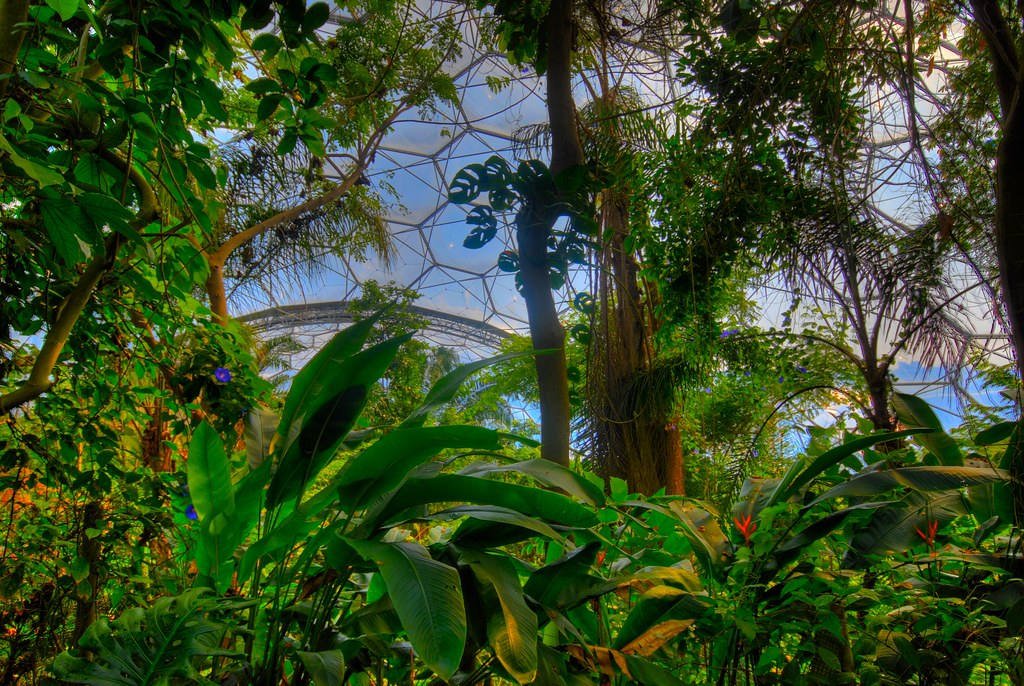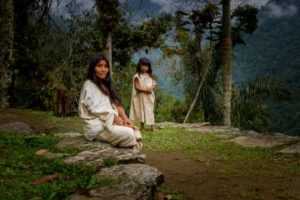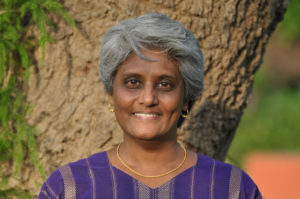
Lost and Found in Eden – Part I
by Usha Alexander
[This is the fifth in a series of essays On Climate Truth and Fiction, in which I raise questions about environmental distress, the human experience, and storytelling. It first appeared on 3 Quarks Daily. This fifth essay is divided into three parts. The fourth essay in the series, called ‘Tales from a Changing World’ is here.]

High in the Sierra Nevada de Santa Marta of northern Colombia, the Kogi people peaceably live and farm. Having isolated themselves in nearly inaccessible mountain hamlets for five hundred years, the Kogi retain the dubious distinction of being the only intact, pre-Columbian civilization in South America. As such, they are also rare representatives of a sustainable farming way of life that persists until the modern era. Yet, more than four decades ago, even they noticed that their highland climate was changing. The trees and grasses that grew around their mountain redoubt, the numbers and kinds of animals they saw, the sizes of lakes and glaciers, the flows of rivers—everything was changing. The Kogi, who refer to themselves as Elder Brother and understand themselves to be custodians of our planet, felt they must warn the world. So in the late 1980s, they sent an emissary to contact the documentary filmmaker, Alan Ereira of the BBC—one of the few people they’d previously met from the outside world. In the resulting film, From the Heart of the World: The Elder Brother’s Warning (1991), the Kogi Mamos (shamans) issue to us, their Younger Brother, a warning akin to that which the Union of Concerned Scientists would also later issue in their World Scientists’ Warning to Humanity (1992, with a second notice in 2017): that we must take heed of our damage to the planet; that if we don’t stop what we’re doing to it, we will destroy the world we know.
The Kogi warning, however, is couched in the language and metaphor of their own knowledge system. They speak of The Great Mother, who taught them “right from wrong,” and whose teachings still guide their lives. “The Great Mother talked and talked. The Great Mother gave us what we needed to live, and her teaching has not been forgotten right up to this day,” they tell us. It’s Younger Brother who is causing problems. “They are taking out the Mother’s heart. They are digging up the ground and cutting out her liver and her guts. The Mother is being cut to pieces and stripped of everything,” the Mamos scold. “So from today, stop digging in the Earth and stealing the gold. If you go on, the world will end. You are bringing the world to an end.” You can hear in their tone that it doesn’t occur to them that Younger Brother might not listen.
For the Kogi, gold is the blood of the Great Mother; it holds for them a value entirely apart from the way we value gold. For them, the well-being of the Great Mother is paramount, and they live now—as they always have—in service to her, our world. During the millennium before Columbus bumped into the Caribbean islands, the ancestors of the Kogi had created the complex, non-literate Tairona civilization, stretching from the Caribbean Sea up into the Sierras. They farmed and fished, their subsistence practices enmeshed within a sophisticated knowledge system that described the complex local ecology. They built cities of stone connected by roadways, marvels of engineering, working in league with what nature provided, rather than against it. Their several settlements were located within the different ecological zones of the diverse landscape, and each played its part in providing for their larger civilization. For example, the coastal Tairona fished and collected salt, which they shared with their sister settlements, from whom they received maize and other goods, each of which was produced within its own optimal ecozone, sustainably supporting a population of three hundred thousand people.
When the Spaniards arrived, they enslaved the coastal Tairona, as they did so many others, forcing them to produce gold. Many tried to escape to their cities in the mountains. But the upland Tairona Mamos sent them back, explaining that their way of life depended on the different products contributed by Tairona settlements in each zone; they would not survive as a people, if they abandoned the coast. So the coastal Tairona returned and put up with the abuses of the Spaniards for many years. This painful arrangement finally ended with the arrival of a Spanish governor who believed it best to exterminate the heathens. Survivors fled again to the remote cities of their rugged massif, where the Spanish couldn’t follow, and this time the Tairona could never go back. Without access to all the parts of their earlier networked system of production, the Tairona had to adjust, adapting some new foods and techniques gleaned from the Spanish in support of their balanced self-sufficiency. Their population crashed to less than a tenth of its earlier number, in what were undoubtedly horrific decades of hunger and loss. And they isolated themselves for nearly five hundred years.
It may seem a bit dramatic to say, as the Intergovernmental Panel on Climate Change (IPCC) did in their 2018 Special Report 1.5, that keeping global temperature rise to the “safe” limit of 1.5ºC “would require unprecedented transitions in all aspects of society.” Or that we need to radically transform our ways of life in order to live sustainably. Perhaps it feels overstated, because sustainability—the word, the concept—has been co-opted for marketing purposes; it’s used to greenwash products or corporate images, to make us feel good about our choices or hopeful about new technologies. But the word actually has a real and terrifying meaning: that which is not sustainable, will come to an end. This is what the Kogi and the Alliance of World Scientists, in their own ways, both warn us about our modern world. But if the settled Tairona/Kogi farmers were able to live sustainability for over a thousand years, how did Younger Brother sink so deeply into unsustainability?
[End of Part I]
[Lost and Found in Eden – Part II]

Usha Alexander was born to Indian immigrants who came to the United States in the 1950s and settled in the very small town of Pocatello, Idaho. She ran away to university at the age of 19, and later joined the US Peace Corps, where she served as a science teacher in the archipelago nation of Vanuatu. In the late 90s, Usha made her way to the San Francisco Bay Area of California, where she settled and worked for Apple Computer for many years.
Since 2013, Usha resides with her partner, writer and photographer, Namit Arora, in the National Capital Region of India. Usha has lived in four different countries and has learned to carry her home within herself, yet she frequently returns to the CA Bay Area with a certain sense of homecoming.